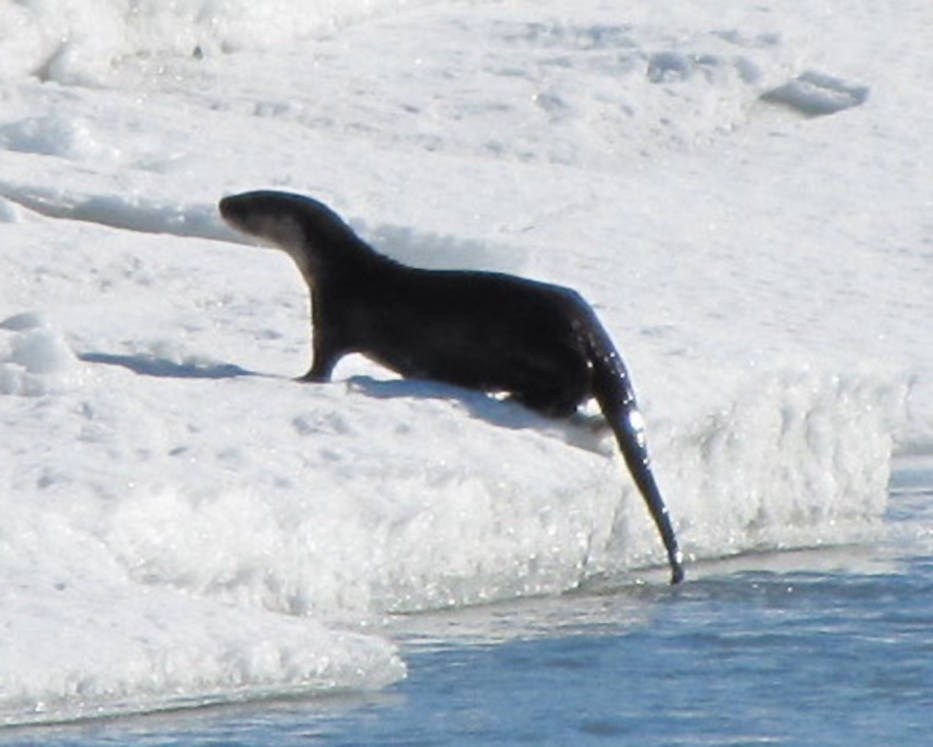My first experience with river otters began in the mid-1960s as an “older” — just out of the military — university student. I was approved to conduct an undergraduate research project on two young semi-tame river otters, a male and female, who my advisor had obtained from then-river-otter-expert Emil Liers of Minnesota. The semi-tame otters had never seen or eaten a fish and my study was to determine if the otters would instinctively know how to catch fish underwater or had to be taught (by their mother). I was also responsible for the daily care of the otters and thus became very familiar with otter vocalizations and behavior.
For the fish-catching behavior experiments, I observed the otters in a large tank through an underwater window. After first documenting the otter’s swimming agility over several weeks I placed a green sunfish into their tank. It was the first time the otters had seen a fish. Out of great curiosity the otters first merely followed the new creature suddenly swimming in their tank. Then the male tried to catch it and after several unsuccessful attempts finally managed to outmaneuver the fish.
But once the otters caught a fish, the “fun” of the pursuit appeared to be over and they let the dead fish fall to the bottom of the tank and then losing interest swam away. But they eventually discovered that these “fast-swimming-fun-to-catch” creatures were also edible. I concluded that for these young otters catching fish was an inherited behavior that merely required practice, not a learned behavior. Since that time long ago I developed a life-long affection for these intelligent, inquisitive, vocal, and playful animals.
It is therefore always a great pleasure for me to fortuitously encounter river otters in the wild because such encounters are rare. If I am lucky, while hiking and canoeing on the Kenai National Wildlife Refuge, I will see a river otter about once every three or four years. My son, who often canoes on remote lakes in the Kenai Lowlands, sees them more often. He once had a family of otters play nearby and swim under his canoe.
Once in the 1990s, when then-refuge-pilot Bill Larned and I were flying wildlife surveys high in the Kenai Mountains above the small lakes near the head of Cottonwood Creek on the south side of Skilak Lake, we saw a lone river otter out in the middle of nowhere loping and sliding along in the snow, headed over the high snow-covered mountains toward the upper Killey River drainage. I also sometimes observed river otters on the edge of ice along small unfrozen creeks or the Kenai River. It was always reassuring to know they and other wildlife had a secure home on the Kenai Refuge.
From a biased human perspective, river otters are one of the few wild carnivores that seem to enjoy their lives. They spend time close together as a family group, chasing and wrestling each other, sliding down banks, and investigating everything that attracts their attention. I hope someday to see yet another river otter in the wild. It’s about time—the last one I saw was in March 2014!
Dr. Ted Bailey was supervisory wildlife biologist at the Kenai National Wildlife Refuge before retiring in 2001. He has lived on the Kenai Peninsula for over 40 years. Find more information about the Refuge at http://kenai.fws.gov or http://www.facebook.com/kenainationalwildliferefuge.

